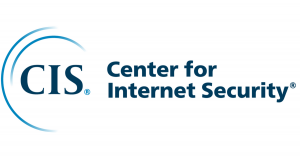The employment landscape has changed in the wake of the pandemic. Most employees have experienced some degree of burnout; many are dealing with digital fatigue. For state and local government, it can be difficult to hang onto skilled workers and to keep the talent pipeline flowing.
In a recent GovLoop webinar, a roundtable of experts laid out practical strategies for state and local entities looking to support their existing workforce and build toward the future.
State and local governments may struggle in the current environment, with unfilled positions and an inability to recruit and retain in a highly competitive world, and COVID exacerbated the situation. For many state and local agencies, “the infrastructure investments, in our technology in particular, have not always been there” to support that shift, said Amanda Crawford, executive director and chief information officer in the Department of Information Resources for the state of Texas.
At the same time, talent is scarce, particularly in IT and cybersecurity. “There’s just not enough people out there that are skilled up in these areas that can support the amount of work” that government needs to perform, said Karen Sorady, vice president of member engagement in the CIS Multi-State Information Sharing and Analysis Center.
Still, success is possible. The panelists defined five strategies that state and local governments can use to build a stronger culture, support workers and drive recruitment and retention for the long haul.
Listen Thoughtfully
State agencies can use their existing authorities to make changes in support of personnel. In order to do that effectively, leadership needs to understand what people want and need. “I personally do not believe [in] a big employee-wide survey,” said Alex Lawrence, chief people officer for the City of Boston. Leaders should instead be having personal conversations, and also can use organizational structures to drive insight.
In Boston, for example, a transit-oriented Employee Resource Group (ERG) wanted to make biking to work easier and more accessible. “As a result of a very explicit and thoughtful ask…we were able to make the bicycle rideshare system that we have in the city of Boston free for all of our city employees,” Lawrence said.
Conduct ‘Stay Interviews’
With an eye toward retention, it makes sense to find new avenues for checking in with employees in a regular, formal way, Crawford said.
“We interview folks when they come to a job and then when they leave. But we also want do those ‘stay interviews.’ I meet with all of my employees here at the Department of Information Resources, we do 20-minute meetings and I send questions ahead of time,” she said. “I am getting face time with everybody at least once a year.”
Think Broadly
Many state and local agencies are struggling to make hybrid work both effective and satisfying. In addressing those challenges, they also need to think about those whose jobs don’t obviously lend themselves to remote work.
In Boston, for example, inspectors still have to go out into the field — but city leaders saw a way to improve their situation. The pandemic showed it wasn’t really necessary for them to stop by the office at the end of the day, as they previously had done. “Let’s think about the things that we learned about coming out of the pandemic that increase workplace flexibility that apply across all of our different sets of workers,” Lawrence said.
Leverage Technology
It can be hard to keep remote employees engaged. For many in state and local government, the pandemic “forced us to really employ the collaboration tools that we have, or in some cases get some new ones,” Sorady with CIS said. Those same productivity tools also can help with engagement.
Modernized communication tools can be useful in “making people feel like they belong, making them feel like they can collaborate, that they’re part of the team,” she said. “One of the things we do in our current environment is we have virtual coffee sessions, really just meet-and-greets with other employees, taking a half hour out of your day to just connect and get to know one another.”
Shift the Emphasis
Panelists noted that few new workers think of government service as a lifelong commitment. Agencies need to craft a new narrative. “Is it, ‘make the state your first job’ or if you’re at the end of the career, ‘make the state your last job’?” Crawford said. “Be open to that.”
Agencies also need to put a greater emphasis on reskilling and upskilling, and they need to find creative ways to do that. They can tap technology vendors for support, making a training a part of any modernization contract. They also can look more broadly as they seek to elevate internal talent.
“There may be people in the Department of Motor Vehicles or in Tax and Finance that are interested in IT careers, that are interested in starting something new,” Sorady said. Agencies can work “to identify within their existing workforce those likely people that could come board and help build those jobs.”
This online training brought to you by:






Leave a Reply
You must be logged in to post a comment.